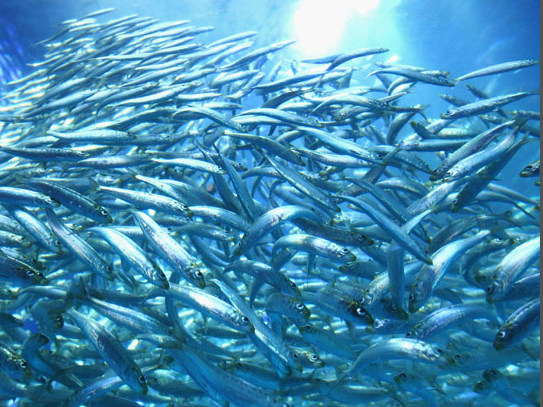 Some may be wondering if they even exist. Well, they do. The Plunge Protection Team is officially known as the President’s Working Group on Financial Markets – was created after the 1987 crash.
Some may be wondering if they even exist. Well, they do. The Plunge Protection Team is officially known as the President’s Working Group on Financial Markets – was created after the 1987 crash.
It appears to have powers to support the markets in a crisis with a host of instruments, mostly through buying futures contracts on the stock indexes (Dow, S&P 500, Nasdaq and Russell) and key credit levers. And it has the means to fry “short” traders in the hottest of oils. The team is led by Treasury chief Hank Paulson, ex-Goldman Sachs, a man with a nose for market psychology, and includes Fed chairman Ben Bernanke and the key exchange regulators.
PPT was created by Ronald Reagan to prevent a repeat of the Wall Street meltdown of October 1987. Its members include the Secretary of the Treasury, the chairman of the Federal Reserve, the chairman of the SEC and the chairman of the Commodity Futures Trading Commission.
Modus Operandi Of PPT
According to John Crudele of the New York Post, the PPT modus operandi was revealed by a former member of the Federal Reserve Board, Robert Heller. Heller said that disasters could be mitigated by “buying market averages in the futures market, thus stabilising the market as a whole.”
This appears to be the strategy that has been used. Former-Clinton advisor, George Stephanopoulos, verified the existence of The Plunge Protection Team (as well as its methods) in an appearance on Good Morning America on Sept 17, 2000.
Stephanopoulos said:
“Well, what I wanted to talk about for a few minutes is the various efforts that are going on in public and behind the scenes by the Fed and other government officials to guard against a free-fall in the markets ... perhaps the most important the Fed in 1989 created what is called the Plunge Protection Team, which is the Federal Reserve, big major banks, representatives of the New York Stock Exchange and the other exchanges, and they have been meeting informally so far, and they have a kind of an informal agreement among major banks to come in and start to buy stock if there appears to be a problem.

They have in the past acted more formally. I don’t know if you remember but in 1998, there was a crisis called the Long Term Capital Crisis. It was a major currency trader and there was a global currency crisis. And they, with the guidance of the Fed, all of the banks got together when it started to collapse and propped up the currency markets. And, they have plans in place to consider that if the markets start to fall.”
Stephanopoulos’ comments have never been officially denied.
Robert McHugh, PhD, has provided a description of how it works, which seems consistent with the comments of Robert Heller. “The PPT decides markets need intervention, a decline needs to be stopped, or the risks associated with political events that could be perceived by markets as highly negative and cause a decline; need to be prevented by a rally already in flight. To get that rally, the PPT’s key component – the Fed – lends money to surrogates who will take that fresh electronically printed cash and buy markets through some large unknown buyer’s account. That buying comes out of the blue at a time when short interest is high.”
Critics of PPT
If a secret team is interfering in the stock market, it presents serious practical and moral issues. For one thing, it disrupts natural “corrections” which are a normal part of the business cycle and which help to maintain a healthy and competitive slate of equities. More importantly, outside intervention punishes the people who see the weaknesses in the stock market and have invested accordingly. Clearly, these people are being ripped off by the PPT’s manipulations. They deserve to be fairly compensated for the risks they have taken. Moreover, artificially propping up the market only encourages the over-leveraged to continue to believe that the grossly-inflated market will continue to rise. Rewarding foolishness only stimulates greater speculation. The tinkering of the PPT is sure to erode confidence in the unimpeded activity of capital markets.
Where is the “free market”? The “free market” is merely a public relations myth with no basis in reality. Saving the system will always take precedent over ideology. Trust in the free market is wavering. Whatever happened to the idea of completing the “market cycle” and allowing markets to self-correct, whether that meant belt-tightening or not? What about the ethical question of whether government manipulation should be allowed in a “free market”? Also, by what authority do the government and the banks interfere in the futures’ markets and shift momentum from the prevailing trend?
Pragmatism vs Idealogy
The argument is based on the fact that free markets should be allowed to exist. Why? Why is that necessary? Different times in history and financial markets have different roles to play. Fifty years ago a financial collapse is likely to be a localised event, not now. What used to be a self-contained localised event has now gone on to have major global repercussion. Over the last 20 years, markets have not really decoupled but rather in crisis, we have witnessed stronger inter-connectedness and collateral damage.
As a politician, bureaucrat and/or steward of good governance, nobody in those positions would want a total collapse of financial markets, as the rebuilding process may take decades. Maybe there is too much leveraged instruments out there – but that’s a separate issue altogether. It is easy to be critical – to call for total free market movement when there are so many inherent faults within the financial system is simply highly irresponsible. Maybe there is too much leverage now and to allow for unmanaged falls could lead to catastrophes that many economies may not be able to recover from.
We have to acknowledge that there is a herd mentality among certain fund managers and hedge funds even, and collectively they can take huge advantage over the rest of the markets by playing the trends together – who is to say that they are not acting in cahoots sometimes? Hence we do need a power player, to bring sanity back, and not allow any big domination or excessive manipulation by the one group of funds. The existence of PPT also signals as a threat to diminish any potential plans to corner or misguide the markets with criminal intent.
We need PPT
Targeting the Americans for having PPT is very silly. The US has military and global economic leadership, I would expect them to have some sort of PPT. Capitalism yes, but free markets have to be redefined according to the times. The ones who call for total free markets need to broaden the bigger picture. It’s idealogical but not practical. Just like most things in life, who practises pure communism or pure planned economy anymore?
Capitalism, free markets, planned economy are all models based on theories, not absolutes based on religious fervour.
Not many people know that Malaysia has one of the highest GDP percentages being listed, it’s in the high 80s. Other developed countries range from 50% to 70%.
What that means is that many countries’ economic performance have a moderate to very high correlation to financial markets. Say, we have totally free markets and let’s go back to the LTCM 98 debacle. Nobody would have stepped in as the KLSE was languishing in the 500-700 range after the 97 implosion. Now you get another round of financial free markets correction. It would have decimated demand and assets globally. That would caused many stuttering companies and even whole industries to completely be wiped out. The KLSE might even have collapsed to 300, who knows. So we need to think of repercussions, because unguarded corrections could kill off more than we could rebuild.
Yes, the shorts might be dealt a bad deal but its a “lesser evil” kind of scenario here. It’s not just in saving major correctional phases, the PPT could also come in to deflate excessive liquidity by exhorting various central banks to tighten policies or soak liquidity. What we want is to lessen the pendulum swings on both extremes.
Sometimes things are not as bad as they seem.
What About The Subprime Crisis?
Well, the subprime crisis was way too big to even contemplate a PPT operation. Because you were dealing with confidence and the credit markets as we know was seizing up. Lehman Brothers and Bear Stearns were falling like bricks. The Fed was trying to ask any bank to buy them out, but all were knee deep in trouble as well, they couldn't just save one. They tried with Bear Stearns but they had to let Lehman Brothers go, there was no one else willing to buy unless they had a strong guarantee from the government. There was only so much the Fed and Paulson could do. Mind you, there was also implosion with AIG and Fannie and Freddie, it was just too big to save everyone.
It looks like we have reached the zenith for PPT to be workable. It also looks likely that any future crises will also be "too big" for PPT to be effective. Call it what you may but the derivatives side of things have grown so large and cumbersome that the real "exposure" carried on any banks or investment banks have gotton so way out of hand.
To roll back the regulations on "capital requirements" and trading positions now are a must, and stricter regulations, but there are always new fangled instruments and off balance sheet agreements that people are so ingenious to side step the rules.
Thus, the financial markets are not going to get any safer despite more regulations, because we never remember our mistakes. The next bubble or rally comes along and everybody is so well paid in the system that we are not going to be bothered with it (again).
Malaysia
Over the last 10 years, our indexed stocks have been increasingly "owned" by local funds. To a large extent it gets easier to "manage" the index. You and I know that when that happens, we may be tempted to "manage" any untoward events. Not being allowed to correct properly will only mean that we will not be addressing the "gaps in valuations properly", it will also mean we will sweep the "inefficiencies and mistakes" under the guise of a managed index. Beware.



















































